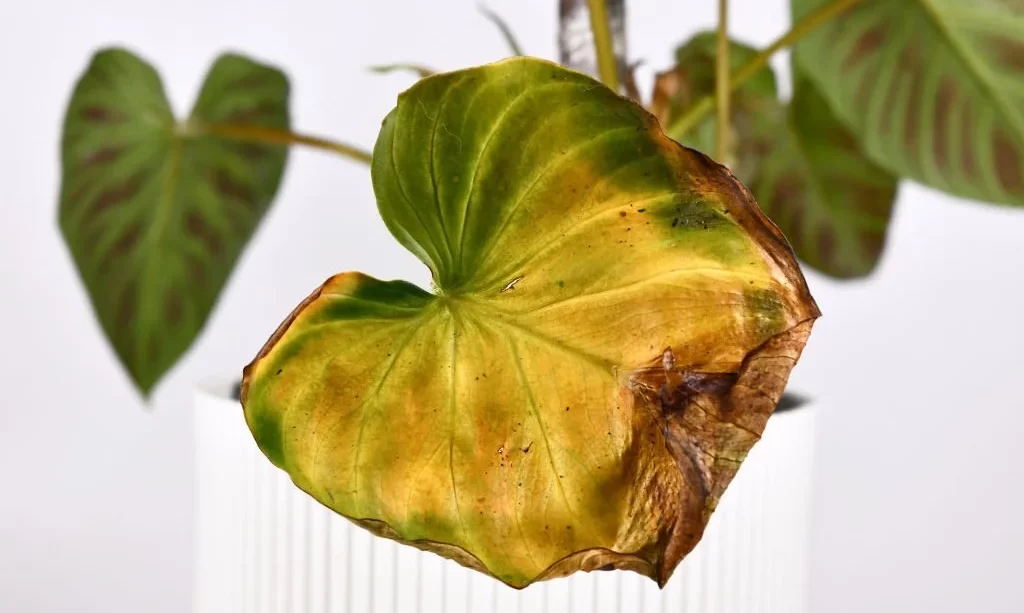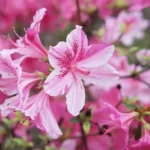Philodendron plants are cherished for their lush, green foliage, making them a popular choice for indoor gardening enthusiasts. However, one common concern among philodendron caretakers is the sight of their once-green leaves turning yellow. While it can be disheartening to witness this change, it’s important to understand that yellowing leaves in philodendrons are not always a cause for alarm. In this article, we’ll explore the various reasons why philodendron leaves may turn yellow and share practical insights on how to differentiate between natural aging and potentially more serious issues. By gaining a deeper understanding of this phenomenon, you can provide the best care for your philodendron and enjoy its vibrant foliage for years to come.
- ARE YOU STARVING YOUR PHILODENDRON? Feed your philodendron essential nutrients to grow healthy and strong. Houseplant Resource Center’s gentle plant food is specially formulated as a philodendron fertilizer, providing key elements for growth, improving nutrient uptake, and correcting soil deficiencies.
- THE PERFECT MULTIVITAMIN: Grow big, bold houseplants with the ideal N-P-K ratio (3% nitrogen, 3% available phosphate, 3% soluble potassium) for your philodendron. Good for growing your houseplant both indoors and outdoors. Our liquid fertilizer is all purpose and suitable for other indoor potted plants. It does a great job as a monstera fertilizer!
- BIOSTIMULANT BLEND: Humic-fulvic acid and sea kelp extract are a plant’s best friends, boosting nutrient uptake for hearty rooting and vibrant color.
- EASY TO USE – NO MIXING OR MESS! Gentle enough to use every time you water. Dilute one teaspoon into a cup or more of water before your plant’s weekly watering. It makes plant care simple!
- INCLUDES FREE PHILODENDRON CARE WEBINAR AND E-BOOK with your purchase that will help you grow the perfect philodendron in your home and troubleshoot any problems you may be having.
Natural Leaf Aging
Let’s begin by addressing one of the most common causes of yellowing leaves in philodendrons – natural leaf aging. Like all plants, philodendrons have a natural life cycle, and their leaves age over time. It’s essential to recognize this normal process as it sets the stage for understanding other potential issues that may affect your philodendron’s leaf color.
Overwatering
Overwatering is a common culprit behind yellowing philodendron leaves. Here’s why it happens:
- Root Saturation: When you consistently provide more water than the plant can absorb or when the pot lacks proper drainage, the roots become waterlogged.
- Reduced Oxygen: Waterlogged roots struggle to access oxygen, hindering their ability to function correctly.
- Root Rot: Prolonged waterlogging can lead to root rot, a fungal disease that damages the roots and reduces the plant’s capacity to take up nutrients.
If you suspect overwatering, allow the soil to dry out before watering again and ensure your philodendron’s pot has drainage holes to prevent water from accumulating at the roots.
Underwatering
Underwatering can also lead to yellowing philodendron leaves, albeit for different reasons:
- Moisture Stress: Insufficient water supply can stress the plant, causing it to conserve resources by sacrificing older leaves.
- Reduced Nutrient Uptake: Without adequate water, philodendrons struggle to transport essential nutrients to their leaves, resulting in yellowing.
- Wilting: In severe cases of underwatering, leaves may wilt and turn yellow.
To address underwatering, make sure you establish a regular watering routine, ensuring that the soil remains consistently moist, but not waterlogged. Water thoroughly, allowing excess water to drain away, and adjust the frequency based on your philodendron’s specific needs and the conditions in your home.
- 100% NATURAL: Special blend ideal for Heartleaf Philodendrons, Red Leaf Philodendrons, Brasil Philodendrons, Elephant Ear Philodendron and Much More
- USES: Specially formulated for growing healthy philodendron plants in containers
- Benefits: Organic humus, excellent drainage, nutrient retention, water retention, and pH balance
- Ingredients: Peat moss, pine bark, worm castings, perlite, and lime
- Size: 8 quarts (enough for a big 12-inch pot)
Lack of Light
Insufficient light is another factor that can lead to philodendron leaves turning yellow. Here’s how it happens:
- Chlorophyll Production: Philodendrons require adequate light to produce chlorophyll, the pigment responsible for their green color and the photosynthesis process.
- Yellowing and Fading: When exposed to low light levels for an extended period, philodendron leaves may start to lose their green pigmentation, resulting in yellowing or a paler appearance.
- Leggy Growth: In search of more light, philodendron plants may exhibit leggy growth with elongated stems and sparse leaves.
To address this issue, ensure that your philodendron receives the right amount of light. Most philodendron varieties thrive in bright, indirect sunlight, but some can tolerate lower light conditions. Adjust the plant’s location accordingly and consider rotating it periodically to ensure all sides receive even light.
Nutrient Deficiency
A lack of essential nutrients, particularly nitrogen, can cause philodendron leaves to turn yellow. Here’s why nutrient deficiency occurs:
- Nutrient Uptake: Philodendrons require a balanced supply of nutrients to maintain healthy leaf color and overall growth.
- Yellowing as a Symptom: A shortage of nitrogen, iron, or other essential nutrients can manifest as yellowing leaves, as these elements are crucial for chlorophyll production.
- Soil Depletion: Over time, potting soil can become depleted of nutrients, especially if the plant has been in the same pot for an extended period.
To address nutrient deficiency, consider fertilizing your philodendron with a balanced, water-soluble fertilizer specifically formulated for houseplants. Follow the recommended application instructions to ensure your plant receives the nutrients it needs to thrive. If your plant has been in the same pot for several years, consider repotting it into fresh, nutrient-rich soil to rejuvenate its health.
- THE ULTIMATE PLANT FOOD FOR HOUSEPLANTS: Wake up your slow growing or dull house plants with Big Green Leaves, a high nitrogen fertilizer for all indoor plants. It feeds soil microbes, roots and leaves. It promotes fuller, greener, more vibrant leaf growth and good soil health.
- GENTLE FERTILIZER & SAFE FOR CONSTANT USE. Our Big Green Leaves plant food is loaded with naturally occuring vitamins, antioxidants, amino acids, minerals, auxins, and cytokinins for vibrant, vigorous, happy houseplants. Urea free formula. Won’t ever burn your plants.
- EASY APPLICATION. Pre-measured scoop included. Mix 1-2 scoops (tsp) per gallon of water. One pouch delivers up to 88 gallons of nutrient solution. Resealable bag for clean, dry storage that will outlast any liquid plant food.
- BETTER VALUE THAN LIQUID FERTILIZERS, SPIKES, AND TABLETS. Most houseplant fertilizers only provide 3 basic minerals at low quantity. Plus they can smell or spoil quickly! Big Green Leaves is loaded with essential superfood nutrients (minerals, vitamins, amino acids, organic biological compounds). Our concentrated 12-4-8 NPK plus organically-bonded micro-nutrients and botanical seaweed extract and organic kelp stay dry, stable, and fresh in our resealable pouch.
- VERSATILE. Use as a soil drench, foliar feed, or hydroponic. An ideal plant food for potted plants, indoor houseplants, grow bags, soilless media, LECA, potting soil, & container gardens. Also great for accelerating plant propagations.
Pests and Diseases
Pests and diseases can also be responsible for yellowing philodendron leaves. Here’s how these issues can affect your plant:
- Pests: Common pests like spider mites, mealybugs, and aphids can infest philodendrons, feeding on their sap and causing leaf damage. This damage may appear as yellow spots, stippling, or a general yellowing of affected leaves.
- Fungal Infections: Fungal infections, such as leaf spot diseases, can manifest as yellow or brown spots on philodendron leaves. These spots may expand, leading to leaf discoloration.
To address these issues, regularly inspect your philodendron for signs of pests or diseases. If you detect any problems, take appropriate measures to control the infestation or infection, which may include using insecticidal soap for pests or fungicides for fungal diseases.
Pot Size and Soil Issues
The size of the pot and soil quality can impact the health of your philodendron leaves:
- Pot Size: If the pot is too small, it can become overcrowded with roots, making it difficult for the plant to access nutrients and water, resulting in yellowing leaves. Repot your philodendron into a slightly larger container if it has outgrown its current one.
- Soil Issues: Poor-quality soil or soil that has become compacted can hinder water drainage and nutrient absorption. Make sure your philodendron is potted in well-draining, nutrient-rich soil to promote healthy leaf color.
By addressing pot size and soil quality issues, you can provide a better environment for your philodendron to thrive.
- Ceramic Planters: Set of 2 modern gold marble flower pots with drainage holes for indoor or outdoor use.
- Durable Material: Handcrafted from quality clay and glazed for a sleek, minimalist look.
- Healthy Plants: Keep soil moist to promote healthy growth and reduce watering.
- Versatile Uses: Can be used as planters, indoor or outdoor decorations, or as functional pots.
- Easy Assembly: No tools required for quick and simple assembly.
Conclusion
Philodendron leaves turning yellow can be a cause for concern, but it’s essential to approach the issue systematically. By understanding the potential reasons behind this color change, including natural leaf aging, overwatering, underwatering, lack of light, nutrient deficiency, pests, diseases, and pot size or soil issues, you can pinpoint the problem and take appropriate corrective actions. Remember that some yellowing due to natural aging is normal, but when combined with other symptoms or unusual discoloration patterns, it’s essential to investigate further. With the right care and attention, you can help your philodendron regain its vibrant green color and overall health.







